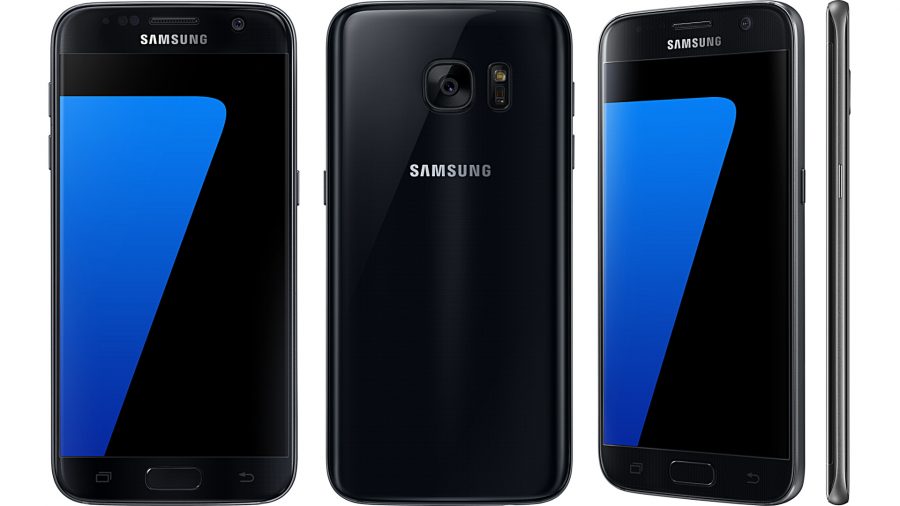What’s New with the Samsung Galaxy S7
Samsung’s Galaxy S6 and S6 Edge was 2015’s phone to beat. We were pleasantly surprised with a new, modernized design, an improved camera and the same fast performance and gorgeous screen that we have come to expect from Samsung. However, this transition wasn’t without compromises. With the new design, we lost expandable storage, waterproofing (which was introduced with the Galaxy S5) and battery life. The S6’s battery life is very poor. Being the phone I use daily, I can confidently attest that the phone will barely get you through a full day with moderate use. For a premium flagship phone, we expect much better. Now, we are in 2016 and Samsung has released another two flagship phones. This generation, Samsung is aiming to polish an already impressive line of phones.
The two new flagships are the Galaxy S7 and S7 Edge. Like its predecessors, the Edge variant has a bigger battery and a curved display. Now there is a difference in screen size between the two models. The S7 has a 5.1 inch display while the Edge variant has a 5.5 inch screen. This size difference is slightly less significant than that of the iPhone and its ‘Plus’ variant. Other than these noted differences, the two variants are identical in terms of design (other than a very slight difference in weight and thickness), performance, and camera quality.
From past to present generation, Samsung focuses on polishing the imperfections, rather than redesigning or drastically changing anything. This treatment was called for, and has further improved the line of phones.
Design
Since the Galaxy S6, Samsung has received great praise for its glass and metal design. With the S7 and S7 Edge, Samsung ever so slightly adjusted the phone’s shape to make it better resemble the larger Galaxy Note 5. This means it has a gentle curve to the body, making it more comfortable to hold and more difficult to drop. The rear glass panel still attracts fingerprints and oil from the hands, so it is still advisable to invest in a case or skin for your phone.
Power
What’s inside of your S7/Edge depends on your region of residence. In the U.S. version, Samsung decided to go with the latest Snapdragon processor made by Qualcomm. This differs from the S6/Edge which had Samsung’s own Exynos processor. Samsung also added an extra gigabyte of RAM to the S7/Edge, giving it a total of four gigabytes. Overall, this should create an improvement in performance between generations.
Battery
The most disappointing feature of the S6/Edge was battery life. As previously mentioned, my S6 struggles to last a day with moderate use. With the S7 and S7 Edge, Samsung provided each variant with a significantly larger battery. Reports indicate the two devices should be able to withstand a long day of moderate to heavy use without trouble. Very light users may even manage to go two days without charging their S7/Edge.
Camera
The camera on the Galaxy S6/Edge was excellent. In my opinion, drastic change was not required. Regardless, Samsung chose to reduce the megapixel count on the device from 16 to 12. Though counterintuitive, this pixel reduction does not reduce the quality of the pictures, due to the use of dual pixel technology. These changes result in a greater overall clarity, better performance in low light, and quicker focusing.
Additional Features
The transition from Samsung’s S5 to the S6/Edge was a bittersweet one. Many beloved features were sacrificed for the new and improved design. Samsung pleased many users this year by bringing back some of these features with the S7/Edge. The S7/Edge is IP68 certified, meaning it is resistant to dust and water damage. 68 is a very high rating; according to dsmt.com, this rating enables complete protection from dust and other solids as well as long term immersion in water. Samsung managed to enable all of this without the use of annoying flaps on the ports and jacks of the device. The second feature Samsung brought back was expandable storage. With the Galaxy S5 and every generation earlier, users were able to expand their device’s storage through the use of MicroSD cards. Using expandable storage was less expensive than purchasing a device with a larger amount of on board (built in) storage. This ability has returned with the S7/Edge and will be made more efficient through the use of software updates with Android’s latest operating system version.
Conclusion
The upgrade from the sixth to seventh generation of Samsung Galaxy flagships seems subtle at first glance. In fact, the two generations are nearly identical! While the two generations are not dissimilar, Samsung chose to take the imperfections of the S6/Edge and perfect them with the S7/Edge. It would be a stretch to deem any device perfect, but one can safely call the Galaxy S7/Edge one of the top devices in the market right now.







